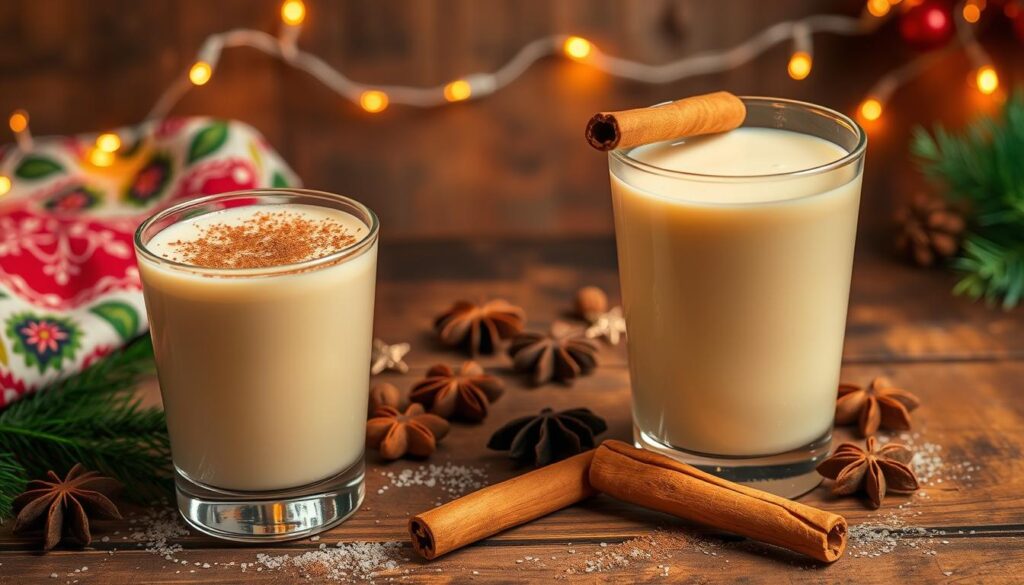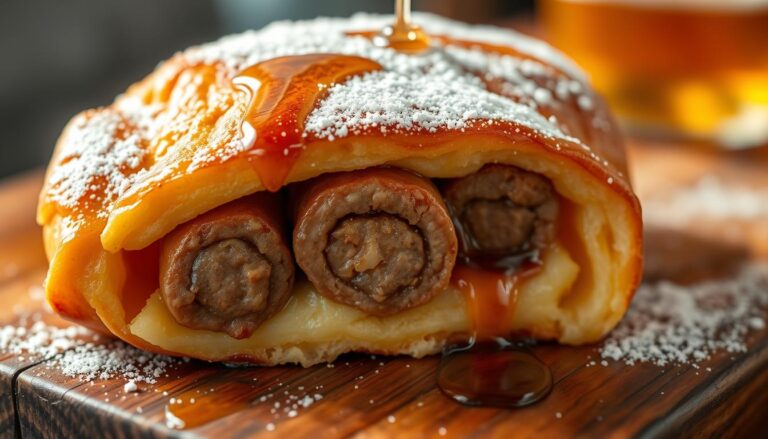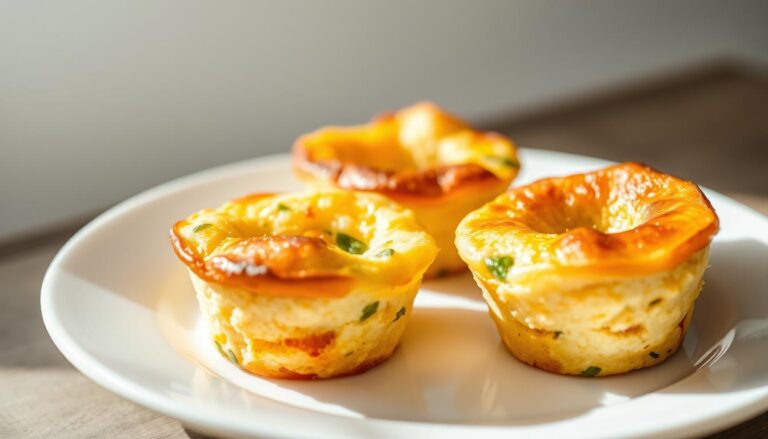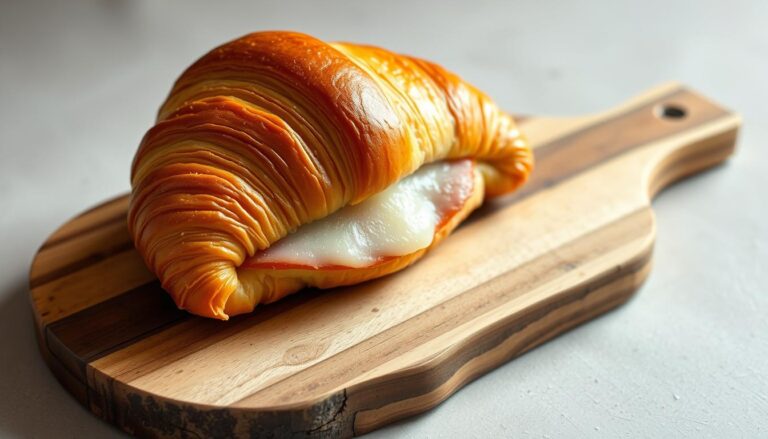Goya Coquito: The Quintessential Puerto Rican Holiday Drink
As the holiday season comes near, many seek out traditional drinks to warm and celebrate their gatherings. You might know eggnog or hot chocolate, but have you tried a Puerto Rican holiday drink? Goya Coquito is a favorite in Puerto Rico, blending coconut milk, sweetened condensed milk, and spices for a unique taste.
This creamy drink is a must-have at Puerto Rican holiday parties. Its popularity is growing worldwide. Making Goya Coquito at home is easy with a simple holiday drink recipe and just a few ingredients.
Key Takeaways
- Discover the rich flavors of Puerto Rico’s traditional holiday drink.
- Learn how to make a delicious and creamy Goya Coquito.
- Explore the cultural significance of Coquito in Puerto Rican celebrations.
- Find a simple recipe to make Goya Coquito at home.
- Impress your friends and family with this unique holiday beverage.
The Rich Heritage of Puerto Rican Coquito
Exploring Puerto Rican Coquito reveals a rich history and culture. This drink is more than a drink; it’s a key part of Puerto Rico’s holiday celebrations. It shows the island’s warmth and hospitality.
Origins and Historical Background
Coquito’s roots are in Puerto Rico’s history, shaped by its cultural mix. It comes from the traditional eggnog, but with local touches like coconut milk and rum. This shows Puerto Rican cuisine’s creativity and diversity.
“Coquito is a testament to the island’s history and the blending of cultures that have shaped Puerto Rican identity.”
Coquito has grown into a unique drink, blending European and African tastes. Its holiday season use is a treasured tradition, shared across generations.
| Ingredient | Origin | Significance in Coquito |
|---|---|---|
| Coconut Milk | Local Puerto Rican ingredient | Adds creaminess and richness |
| Rum | Influenced by European traditions | Provides the signature flavor and kick |
| Spices | African and European influences | Enhances the flavor profile |
Cultural Significance During the Holiday Season
Coquito is vital in Puerto Rican culture during holidays. It unites families and friends, showing unity and joy. Making and sharing Coquito strengthens bonds and creates memories.
At celebrations, Coquito shows the host’s warmth and generosity. Its presence highlights the island’s rich cultural heritage.
The Perfect Goya Coquito Recipe
Making a delicious Goya Coquito requires top-notch ingredients and exact measurements. To craft this iconic Puerto Rican holiday drink, you must grasp the importance of each ingredient. They all come together to create the drink’s unique taste.
Essential Goya Ingredients for Authentic Flavor
To brew an authentic Goya Coquito, you’ll need these key ingredients:
- Goya Coconut Cream
- Goya Sweetened Condensed Milk
- High-quality rum (such as Bacardi or Brugal)
- Vanilla extract
- Cinnamon
- Nutmeg
These ingredients are vital for the drink’s creamy texture and distinct flavor. Goya Coconut Cream and Sweetened Condensed Milk are especially important. They are the drink’s foundation. Rum adds the signature kick and helps preserve the Coquito.
Equipment Needed for Preparation
To prepare Goya Coquito, you’ll need some basic kitchen tools. You’ll need:
- A blender or food processor to mix the ingredients well
- A measuring cups and spoons for precise measurements
- A fine-mesh strainer to strain the mixture for a smoother texture
- A glass bottles with tight-fitting lids for storing the Coquito
Using the right tools ensures your Coquito is well-mixed, smooth, and stored properly. This keeps its flavor and texture intact.
Ingredient Proportions and Measurements
The right mix of ingredients is key to a perfect Goya Coquito. A classic recipe includes:
- 1 can of Goya Coconut Cream
- 1 can of Goya Sweetened Condensed Milk
- 1 cup of rum (or to taste)
- 1 teaspoon of vanilla extract
- A pinch of cinnamon and nutmeg
Remember, adjust the rum to your liking, and tweak the spices to taste.
“The key to a great Coquito is in the balance of its ingredients,”
a seasoned Coquito maker once said. They stress the importance of getting the proportions just right.
Step-by-Step Preparation Guide
Goya Coquito is a key holiday drink from Puerto Rico. You can make it at home with a few simple steps. This will ensure your Coquito is tasty and true to its roots.
Preparing the Coconut Base
The coconut base is the heart of a great Coquito. You’ll mix coconut cream and sweetened condensed milk in a blender. The right mix of these ingredients is key for the drink’s richness and sweetness.
Begin by blending 1 can of coconut cream with 1 can of sweetened condensed milk. Blend until smooth and well mixed. You can tweak the mix to your liking, but this is a good starting point.
Adding Spices and Flavorings
Now, add the spices and flavorings that make Coquito special. Cinnamon and nutmeg are classic choices. Add a pinch of cinnamon and a sprinkle of nutmeg, then blend until they’re fully mixed.
Adding a teaspoon of vanilla extract can also enhance the flavor. The goal is to find a balance that lets the coconut shine without being overwhelmed by spices.
Incorporating the Rum Element
Rum is essential for Coquito. The type and amount can vary based on your taste. Traditionally, Puerto Rican rum is used, and the amount depends on your preference.
“The rum is what gives Coquito its festive spirit, making it a drink that’s synonymous with celebration and joy.”
Start with 1/4 cup of rum and adjust to taste. Blend it well into the coconut mixture for even distribution.
Blending and Consistency Tips
The last step is getting the right consistency. You want it creamy and smooth. Blend on high speed for about 30 seconds to achieve this.
| Consistency | Adjustment |
|---|---|
| Too Thick | Add a little more rum or coconut milk |
| Too Thin | Add a bit more coconut cream |
By following these steps and tips, you’ll make a delicious Goya Coquito. It’s sure to be a hit at any holiday party.
Mastering the Art of Coquito Making
To master Coquito making, you need to know both traditional and modern methods. This knowledge will make your homemade Coquito with Goya a hit at any holiday party.
Traditional vs. Modern Preparation Methods
The traditional way of making Coquito is hard work. It involves grating coconut and blending by hand. This method is slow but adds a personal touch many love.
Modern methods, however, are quicker. They use canned coconut milk and blenders for a smooth taste. You can pick the method that fits your style and schedule.
Proper Storage and Aging Techniques
Storing Coquito right is key to its flavor. Keep it in a glass bottle with a tight lid in the fridge. The cold helps the flavors blend like wine.
Before serving, shake the bottle well. This mixes the ingredients.
Aging your Coquito can make it taste even better. Some people let it sit for a few days. But, always check its taste and texture.
| Storage Method | Effect on Flavor | Recommended Duration |
|---|---|---|
| Refrigeration | Enhances flavor melding | Up to 2 weeks |
| Freezing | May alter texture | Not recommended |
How Long Your Coquito Will Last
How long your Coquito lasts depends on storage and preservatives. A good Coquito can stay fresh for up to two weeks in the fridge. Always follow storage tips to keep it fresh longer.
Check your Coquito often for spoilage signs like bad smell or curdling. If you see these, throw it away.
Delicious Variations of Goya Coquito Recipe
Making Coquito is fun because you can try new flavors. You can change the recipe to fit what you like. This makes it great for any holiday party.
Non-Alcoholic Family-Friendly Version
To make Coquito safe for kids, just leave out the rum. You can use vanilla or almond extract instead. Adding a bit of orange or pineapple juice makes it even better.
Chocolate Coquito Variation
Chocolate fans will love adding cocoa powder or melted chocolate. You can also use chocolate-flavored rum for a grown-up twist. It’s a perfect mix of chocolate and coconut.
Tropical Fruit Infusions
Adding tropical fruits like mango or pineapple makes Coquito special. Just blend the fruit and mix it in. It tastes great and looks amazing too.
Spice Variations for Different Palates
Try different spices to make Coquito your own. Nutmeg or cinnamon add a warm taste. Cardamom brings a unique aroma. You can adjust the spices to your liking.
| Variation | Main Ingredient | Taste Profile |
|---|---|---|
| Non-Alcoholic | Vanilla extract | Sweet, creamy |
| Chocolate | Cocoa powder | Rich, chocolatey |
| Tropical Fruit | Mango puree | Fruity, refreshing |
| Spice | Cinnamon | Warm, spicy |
Serving Your Homemade Coquito with Style
When you’re ready to serve your homemade Goya Coquito, think about how Puerto Ricans traditionally serve it. The way you present Coquito can make it a special part of your holiday. It’s a chance to make memories.
Traditional Serving Vessels and Presentation
Coquito is usually served in small, fancy glasses. These glasses highlight the drink’s creamy texture and add to the holiday feel. You might also serve it in decorative bottles or jugs for bigger groups.
Popular Serving Vessels:
- Small liqueur glasses
- Decorative glass bottles
- Antique or vintage glasses for a unique touch
| Serving Vessel | Description | Occasion |
|---|---|---|
| Small Liqueur Glasses | Elegant and traditional, perfect for showcasing Coquito’s creamy texture | Holiday parties, intimate gatherings |
| Decorative Glass Bottles | Ideal for serving larger quantities, adds a festive touch | Large gatherings, Coquito-themed parties |
Garnishing Ideas for a Festive Touch
Adding a garnish to your Coquito can make your holiday even more festive. Try sprinkling cinnamon or nutmeg on top. You could also use a cinnamon stick or cocoa powder for something different.
Garnishing Ideas:
- Cinnamon or nutmeg sprinkle
- Cinnamon stick
- Cocoa powder dusting
By using these serving and garnishing tips, you can serve your homemade Goya Coquito in a way that respects Puerto Rican traditions. It also lets you add your own special touch.
Pairing Coquito with Holiday Foods
Pairing Goya Coquito with your favorite holiday dishes can make your Puerto Rican holiday experience better. As you get ready for the festivities, learning how to match your meals with this traditional drink can make your celebrations even more special.
Traditional Puerto Rican Holiday Dishes
Puerto Rican holiday cuisine is rich and diverse. It features dishes that are both flavorful and steeped in tradition. Some of the most popular holiday dishes include roasted pork, also known as “pernil,” which is often served with arroz con gandules (rice with pigeon peas) and pasteles (meat-filled tamales).
Goya Coquito pairs perfectly with these dishes. Its creamy texture and sweet flavor complement the savory and slightly sweet flavors of the holiday meal.
Other traditional dishes include coquito-infused desserts and tembleque, a coconut pudding dessert. The versatility of Coquito makes it an excellent match for a variety of Puerto Rican holiday treats.
Universal Holiday Treats That Complement Coquito
While Goya Coquito is deeply rooted in Puerto Rican culture, its appeal extends to a wide range of holiday treats enjoyed globally. You can pair Coquito with chocolate desserts, such as brownies or chocolate truffles. The drink’s coconut and vanilla flavors complement the richness of chocolate.
Additionally, Coquito can be paired with fruit-based desserts like coconut cream pie or tropical fruit salad. The creamy texture and subtle spices in Coquito enhance the freshness of the fruit, creating a delightful holiday treat.
Hosting a Coquito-Themed Holiday Gathering
As the holiday season comes, hosting a Coquito-themed party is a great idea. It’s a way to share the joy of Puerto Rican culture with your loved ones. This festive drink is at the heart of their holiday traditions.
To make your party feel like a true Puerto Rican celebration, decorate with bright colors and festive items. Traditional Puerto Rican music and dance can also add to the atmosphere.
Planning Your Coquito Tasting Party
Hosting a Coquito tasting party is a fun way to show off this special drink. You can make different flavors and spice levels to please everyone’s taste.
Setting up a Coquito bar where guests can make their own drinks is a great idea. It lets them try different toppings and flavors. This makes the party interactive and memorable.
Coquito Gift-Giving Traditions
In Puerto Rico, Coquito is more than a drink; it’s a sign of hospitality and joy. It’s often given as a gift during the holidays. You can follow this tradition by making Coquito in decorative bottles for your guests.
Adding a personal touch to the bottles, like labels with names or messages, makes the gift even more special. It’s a thoughtful way to show you care and will be remembered long after the holidays.
Dietary Adaptations of Traditional Coquito
You can still enjoy Coquito’s rich flavors even with dietary restrictions. Making a few adjustments can help. Whether you need dairy-free, vegan, or lower-sugar options, there’s a Coquito for you. It won’t lose the essence of this beloved Puerto Rican holiday drink.
Dairy-Free and Vegan Coquito Options
Traditional Coquito uses dairy, which can be a problem for some. Luckily, there are dairy-free alternatives. Coconut milk, almond milk, and cashew milk are great. They make Coquito vegan-friendly and add a creamy texture.
To make vegan Coquito, swap evaporated milk for a non-dairy milk. Make sure the coconut cream is dairy-free. Some brands offer vegan coconut cream for a rich, creamy Coquito.
| Dairy-Free Ingredient | Description | Effect on Coquito |
|---|---|---|
| Coconut Milk | Rich in coconut flavor and creamy texture | Enhances coconut flavor and creaminess |
| Almond Milk | Low-calorie, nutty flavor | Provides a lighter version with a nutty twist |
| Cashew Milk | Creamy texture, subtle nutty flavor | Adds creaminess without overpowering coconut flavor |
Lower-Sugar Alternatives
Traditional Coquito is quite sweet. You can use natural sweeteners like honey, maple syrup, or coconut sugar. These sweeteners lower the sugar content and add unique flavors.
Another option is to use less sweetened condensed milk. Or, try a lower-sugar version. Some brands offer this convenient substitute.
Adding spices like cinnamon and nutmeg can also balance the flavor. This way, you can enjoy a delicious Coquito that fits your dietary needs.
Troubleshooting Your Goya Coquito
When making your Goya Coquito, you might run into some common problems. Issues like texture separation or unbalanced flavors can happen. But, these are easy to fix with a few tips.
Fixing Texture and Separation Issues
Texture separation is a common problem with Goya Coquito. This happens when the coconut cream and other ingredients separate. To fix this, just shake the container well before serving. If it still separates, try blending the mixture again until it’s smooth.
Another issue is curdling, which can occur if the mixture isn’t chilled right or if it’s exposed to temperature changes. To avoid this, keep your Coquito in the fridge at a steady temperature below 40°F (4°C).
Adjusting Flavors and Sweetness
Changing the flavors and sweetness of your Goya Coquito is simple. If it’s too sweet, you can reduce the sweetened condensed milk in your next batch. If it’s not sweet enough, add a bit more. For flavor, add a pinch of salt to balance it or a dash of cinnamon to add spice.
As one Coquito lover says, “The secret to a great Coquito is balance. You want the flavors to work together, not overwhelm the drink.”
“I’ve been making Coquito for years, and the most important thing I’ve learned is that it’s all about the balance of flavors.”
Conclusion: Celebrating Puerto Rican Tradition in Every Sip
Enjoying Goya Coquito is more than just a tasty holiday drink. It’s a way to connect with Puerto Rican culture and tradition. This iconic beverage brings people together, fostering a sense of community and festive spirit.
Using Goya ingredients in your Coquito recipe makes it authentic. It’s a way to honor Puerto Rican heritage. Whether at a big gathering or a cozy night in, Coquito becomes a cherished tradition. So, as you sip, remember the joy and history it carries, and the memories you’re making.
FAQ
What is Coquito?
What is the significance of Goya in Coquito recipes?
Can I make Coquito without rum?
How do I store Coquito?
Can I make Coquito ahead of time?
How long does homemade Coquito last?
What are some variations of the traditional Coquito recipe?
Can I make dairy-free or vegan Coquito?
How do I fix texture and separation issues in Coquito?
Can I adjust the sweetness level of Coquito?
There are no reviews yet. Be the first one to write one.







